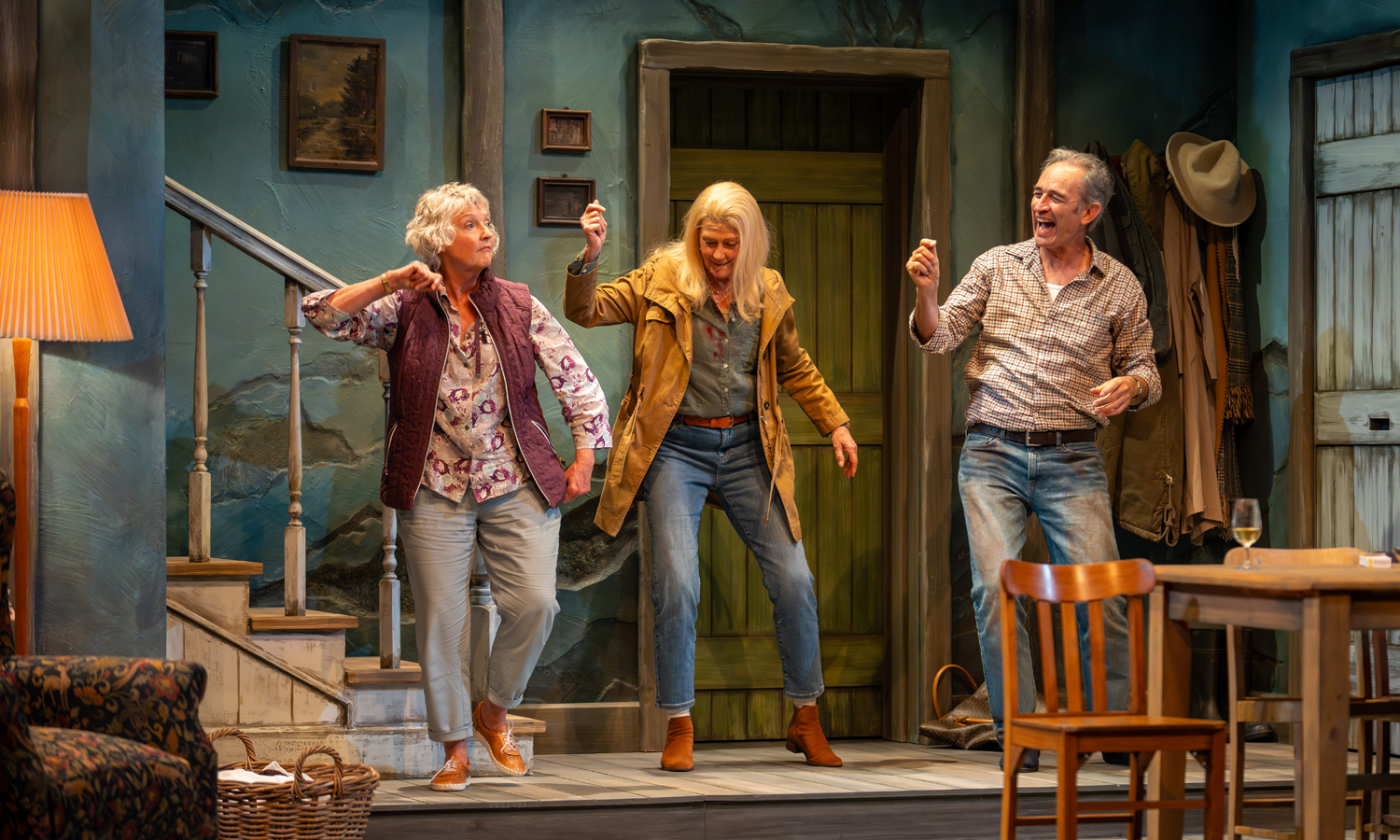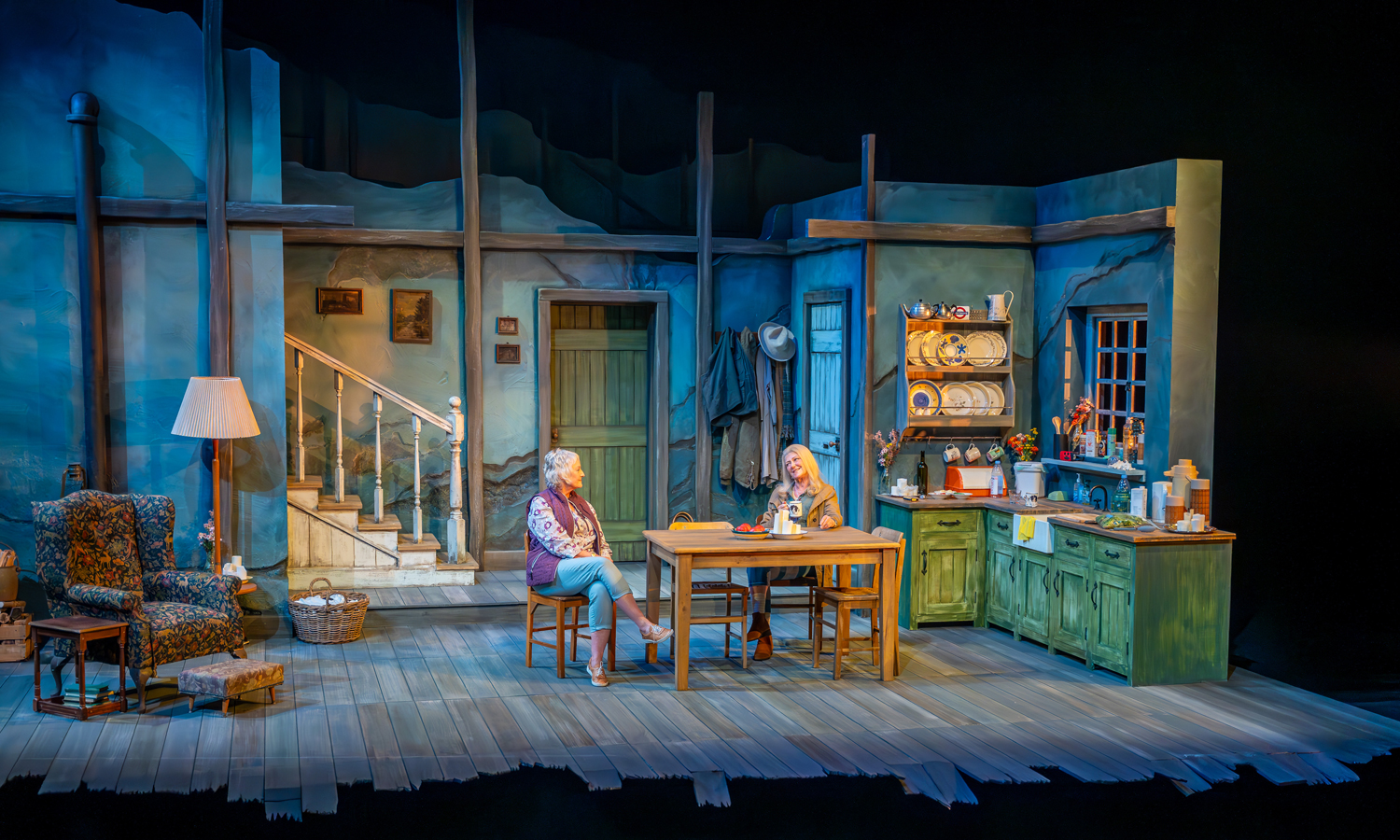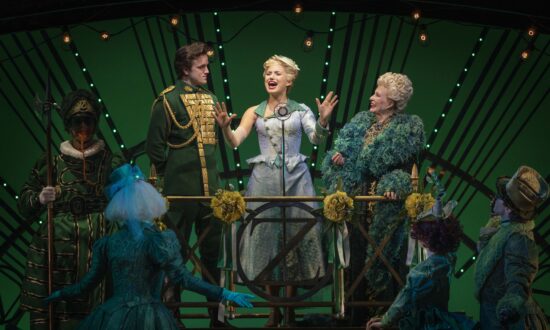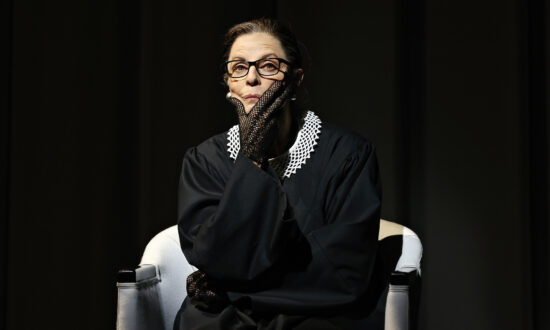State Theatre Company has again opened its season with an excellent production of an outstanding and intriguing play. Last year it was Edward Albee’s The Goat, or Who is Sylvia?. This time it is UK writer Lucy Kirkwood’s The Children.
This many-layered, carefully threaded text audaciously moves – almost lurches – between being an hilarious comedy of manners, and portrait of a marriage (plus one), to a depiction of a cluster of catastrophes. Firstly, a major earthquake, then a nuclear reactor meltdown, and, as a consequence, an environmental disaster.
It might have been an over-ambitious ragout. Instead, Kirkwood has created a small-picture play with big-picture implications. It is expertly fashioned, as theatrically exhilarating as it is thought-provoking.
Set somewhere on the coast of the UK at an unspecified time (although the meltdown and tsunami reference the Fukushima disaster in 2011), a pair of retired nuclear physicists, Hazel and Robin, have bunkered down in an isolated cottage on the edge of a radiation zone. Supplies are limited, electricity is intermittent, daily life is utterly changed. Robin, we are told, goes twice daily to attend to their cattle herd. Hazel does her best to make the cottage homely, preparing nutritious food and keeping up her yoga and her stiff upper lip.
Into this enclave of determined order and routine, like a troublesome truth-seeking stranger in an Ibsen play, comes Rose, a fellow physicist who moved to the US and hadn’t been seen for 40 years. She conjures up complicated memories for both Hazel and Robin. And brings with her a call to action, to service and sacrifice and reparation, that will unsettle every aspect of their carefully constructed retreat from reality.

Terence Crawford delivers one of his best performances as Robin. Photo: Matt Byrne
In State Theatre’s production, director Corey McMahon has lucidly and expertly handled the disparate elements of the play, managing shifts in emotion and tone, as well as invoking the larger questions Kirkwood asks about sustainability, excessive consumption, and climate emergency.
Victoria Lamb’s set is a convincing mix of cosy and chaos. The wood stove and paint-stripped cupboards are contrasted by the huge earthquake cracks in the walls, the protruding wooden beams and the jagged floorboards making the edge of the stage look like the end of the world.
Nic Mollison’s suitably drab lighting reflects the variable power supply with the luminous exceptions of the opening scene where Rose appears like an avenging angel, and the dance routine choreographed by Hazel to the tune of James Brown’s “Hot Pants”.
Belinda Gehlert’s original score, featuring her solo violin, is as sparing as it is sublime, and Andrew Howard’s sound design lends occasional magnitude and scope to what is essentially a chamber play.
The performances are excellent without exception. Lifted and assured by Kirkwood’s sparkling dialogue, spiked with snortingly funny George-and-Martha vitriol, as well as acutely observed emotional disclosures, the actors take the characters through their highs and lows, certainties and doubts, with a precision which serves and reveals the considerable ambitions of the text.

The cast perform a dance routine to James Brown’s “Hot Pants”. Photo: Matt Byrne
As Rose, Tina Bursill is compelling from her first appearance. Stylish, self-contained, highly intelligent, suffering and determined, she embodies both the threat and the redemption that an outsider brings. She has her own history with both Robin and Hazel which Kirkwood explores on multiple levels. Bursill is a memorable foil to her fellow actors.

Get InReview in your inbox – free each Saturday. Local arts and culture – covered.
Thanks for signing up to the InReview newsletter.
Genevieve Mooy is equally impressive as Hazel: conscientious, attentive, easily flustered, but also perceptive and assertive. She notices that Rose knows exactly where the glasses belong in a house she has never visited before. Sometimes Hazel says the quiet out loud. She wants to retreat and escape – and somehow deny – the upheaval of the disasters. She intends to re-construct herself and her life with a yoga mat and her fresh salads. Mooy captures the range in Kirkwood’s portrait. And, by the way, how does a 32-year-old playwright write 60-somethings so unerringly?
As Robin, Terence Crawford delivers one of his best performances. Feasting on the drollery of the writing, he is also a study of a male scientist of a certain age. He is dependent on Hazel but emotionally absent at times. He is bewildered and resentful of his emotionally difficult adult daughter, and the play reveals his locked emotions and disappointments. Crawford navigates all of this, as well as other disclosures, with a little help from parsnip wine.
The play is well-named. There are so many mentions of children and what their future holds. Inter-generational frictions and failures recur and preoccupy the characters in different ways. Hazel is the devoted grandparent, keeping her cottage as a possible haven for family, fretting for her daughter Lauren. Robin is tired of children and half in love with easeful death. Rose is without a child after a failed affair but committed to protect the youthful scientists who, like those at Chernobyl in 1986, face mortal risk in trying to mitigate the damage from nuclear meltdown.
A Guardian poll identified The Children as one of the five best plays of the 21st century. It is certainly a reminder of what a great play looks like, and what the questions are that theatre should be asking.
The Children is at the Dunstan Playhouse until February 17.
Support local arts journalism
Your support will help us continue the important work of InReview in publishing free professional journalism that celebrates, interrogates and amplifies arts and culture in South Australia.
Donate Here




